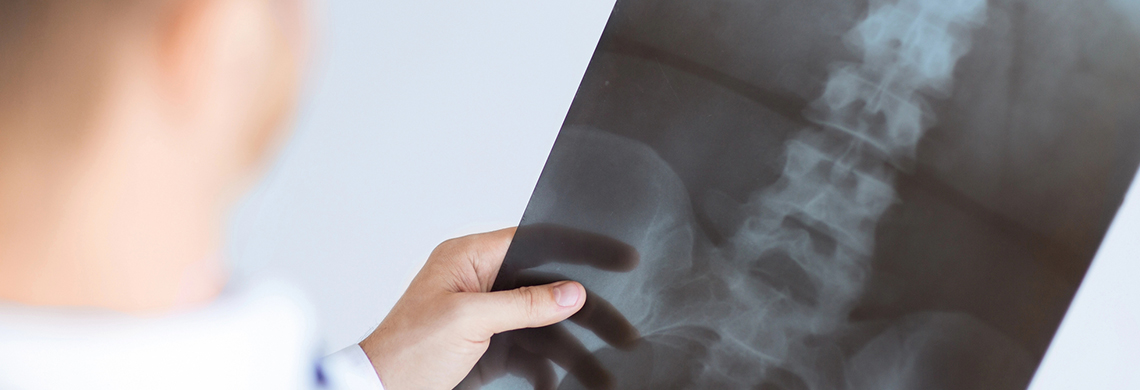Treatment for spine injuries depends on the severity and type of injury. Options may include rest, physical therapy, medications, and in some cases, surgery. It's crucial to consult with a medical professional for a personalised assessment and treatment plan based on the specific condition.

Non-Surgical Treatment Options
Not all cases of back pain require surgical treatment. Here are some of the types of treatments that your doctor may recommend to manage your pain and improve your quality of life.
Lifestyle Changes
You can try making these lifestyle changes to help with your back pain. Exercise can strengthen muscles and reduce pain in people with chronic back and neck pain. If weight is a contributing factor, losing weight may also alleviate back pain by reducing pressure on the spine and back muscles. Meditation can also be helpful in relieving back pain by managing stress, which can cause muscle tension and worsen the pain.
Physiotherapy
Physiotherapy involves doing specific stretches and exercises to relieve pain in a specific area, under the guidance of a rehabilitation specialist and physiotherapist. Each physiotherapy regimen is customised according to the individual needs of the patient. Physical therapy for chronic back pain may involve techniques such as correcting posture, gradually testing pain tolerance, stretching and flexibility exercises, aerobic exercises, and strengthening the core muscles.
Medication
Your doctor may suggest over-the-counter (OTC) pain relievers like paracetamol or non-steroidal anti-inflammatory drugs (NSAIDs) to alleviate back pain. If mild to moderate back pain does not improve with OTC options, a muscle relaxant may be prescribed to relieve pain caused by muscle tightness or spasms. However, muscle relaxants are not typically used for chronic pain management.
Narcotic pain medications containing opioids, such as oxycodone or hydrocodone, are mainly used for intense, short-term pain, such as postoperative pain. They are not recommended for chronic pain due to potential side effects and the risk of addiction. The use of these medications should be closely monitored by your doctor.
Injection-Based Treatments
Nerve blocks, epidural steroid injections, nerve ablations and other types of injection-based procedures are available for chronic back pain. While injections may provide temporary pain relief, they are not intended as long-term solutions and should not be relied upon in isolation.
Alternative Treatments
Acupuncture, biofeedback therapy, laser therapy, electrical nerve stimulation and other non-surgical spine treatments can also make a difference for chronic back pain. Talk to our spine specialist about alternative treatments that could benefit you.
Surgical Treatment
Surgical options are available for people who experience severe pain or significant loss of function without success despite undergoing other treatments. Surgery aims to help with symptoms, correct spinal deformities and stabilise the spine.
Motion-preserving procedures such as disc replacements, laminoplasty and spine decompression surgery are performed in our centre, to allow continued motion in our patients. State-of-the-art technology such as operative microscopes, intraoperative neuromonitoring and intraoperative imaging/navigation systems such as the O-arm has also led to an improvement in patient safety.
Our team can help you decide if it is the right time for surgery.
When Is Surgery Appropriate for Back Pain?
If medication, conservative treatments, physiotherapy and non-invasive treatments fail to relieve symptoms of your back pain, and it is starting to interfere with your life, you should discuss surgical options with your doctor. Surgery is a viable or necessary option to treat serious musculoskeletal injuries or nerve compression such as bone spur, herniated or ruptured disk, spinal deformities, spinal stenosis, vertebral rupture, nerve root problem and rarely tumour.
Open Surgery vs. Minimally Invasive Surgery (MIS)
There are 2 types of spine surgery - open surgery or minimally invasive surgery (MIS).
Open surgery is the conventional approach with a long open incision, so the surgeon can view and access the spinal anatomy by hand.
Minimally invasive surgery is a surgical approach with a few small incisions. It does not involve a long open wound, thus minimising manipulation of the muscles and soft tissue surrounding the spine. This results in a shorter hospital stay, less post-operative pain and speedier recovery.
Vertebra Augmentation (Vertebroplasty and Kyphoplasty)
These are minimally invasive procedures to repair compression fractures of the vertebrae caused by osteoporosis. Both procedures include the injection of cement through small incisions in the skin under fluoroscopy guidance that hardens and strengthens the bone.
Laminectomy/ Decompression Surgery
This is to treat spinal stenosis, narrowing of the spinal canal that results in pain, numbness, or weakness. The surgeon removes the bony plate on the back of vertebrae called the laminae, aiming to open up the spinal canal to relieve pressure on the nerves.
Laminotomy
This surgery removes a portion of the vertebral (laminae) that compresses the spinal cord.
Discectomy or Microdiscectomy
This involves the removal of a herniated intervertebral disc which compresses the nerve root or spinal cord. This type of surgery is a minimally invasive spine surgery (MISS) procedure.
Foraminotomy
The surgeon will enlarge the bony hole of the passageway of the nerve root exiting the spinal canal, called neuroforamen, to prevent a bulging disc or thickening joints from pressing on the nerve.
Nucleoplasty
During this surgery, the spinal disc between two or more vertebrae is removed. The vertebrae is then fused with bone graft (autograft – own bone) or (allograft – donor bone), which may be with or without instrumentation. There are different approaches to stabilise the spinal vertebrae and eliminate movement between the bones, which include:
- ALIF (Anterior Lumbar Interbody Fusion)
- PLIF (Posterior Lumbar Interbody Fusion)
- TLIF (Transforaminal Lumbar Interbody Fusion)
- LIF (Lateral Interbody Fusion - Minimally Invasive Surgery)
Disk Replacement
An alternative to spinal fusion surgery for severely damaged disks, in which the injured disc is removed and replaced by a synthetic disc.




